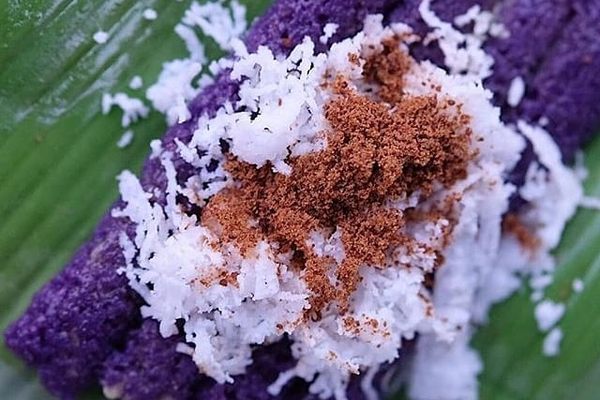Kamayan is a Tagalog word that translates to “by hand” and refers to the traditional Filipino style of eating—communally, and without plates or utensils. Though the practice faded under pressure from colonial rule, kamayan-style feasts are enjoying a resurgence, especially in places with a large Filipino immigrant population.
A typical kamayan meal features a table covered in smooth, waxy banana leaves, a natural substitute for plates and placemats. Spread along the leaves is typical Filipino fare, including fried fish, shrimp, roasted eggplant, pan-fried bok choy, barbecued chicken and pork skewers, lumpia (a Filipino-style egg roll), longganisa (sweet sausage), and more. And, essential to any Filipino meal, everything must be served with plenty of rice and sauces, such as datu puti and Mang Tomás. Using their hands as spoons, diners scoop up rice and other ingredients and slide the gathered morsel into their mouths with their thumbs.
Kamayan feasts can be found around the world, both in Filipino expat communities and, more recently, at pop-ups and restaurants. In some of these places, a kamayan might also be referred to as a “boodle fight.” This term is a bit controversial, however, as it harkens back to a military practice during the United States’ occupation of the Philippines. During a boodle fight, differently ranking officers would engage in ritual eating contests around a table.
Anyone concerned about their ability to wolf down sausages and egg rolls needn’t worry: Today, both kamayan feasts and boodle fights emphasize community more than competition.
Where to Try It
-
The kamayan at this popular New York spot starts at $45/person.
-
Villa Escudero Waterfalls Restaurant
Villa Escudero Plantations and Resort, San Pablo City, 4000, PhilippinesDiners go barefoot at this restaurant located right in the middle of a small river and waterfall.
Written By
 Leigh ChavezBush
Leigh ChavezBush
Sources
- www.npr.org/sections/thesalt/2018/01/20/578649880/with-a-show-of-hands-filipino-american-chefs-rekindle-kamayan-feasts
- www.tandfonline.com/doi/full/10.1080/15528014.2017.1398469
- www.nytimes.com/2016/03/30/dining/mandoline-yana-gilbuena-chef-filipino.html
- food52.com/blog/19423-what-eating-with-my-hands-means-to-me-and-6-other-filipinos


















